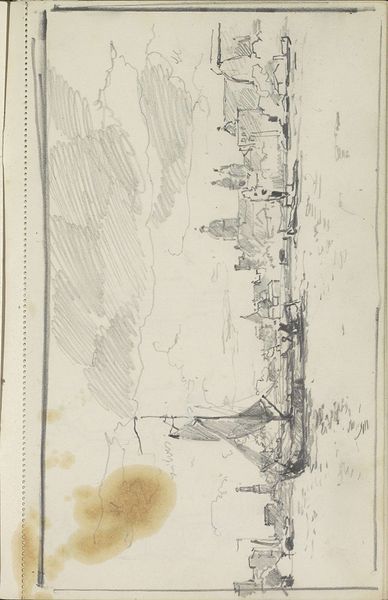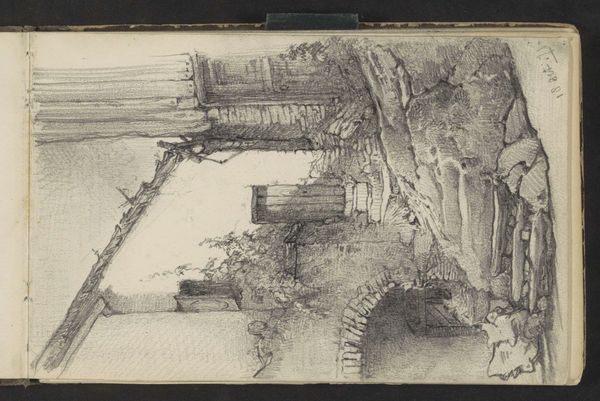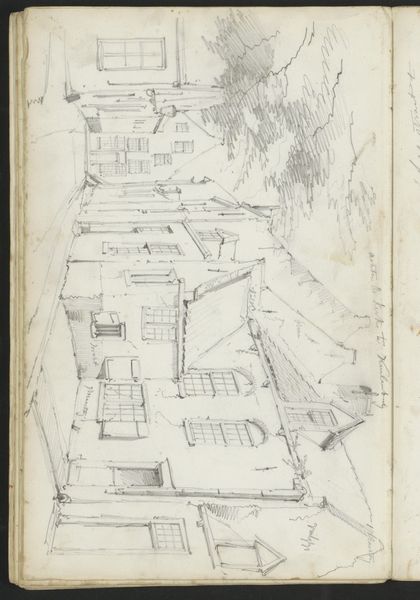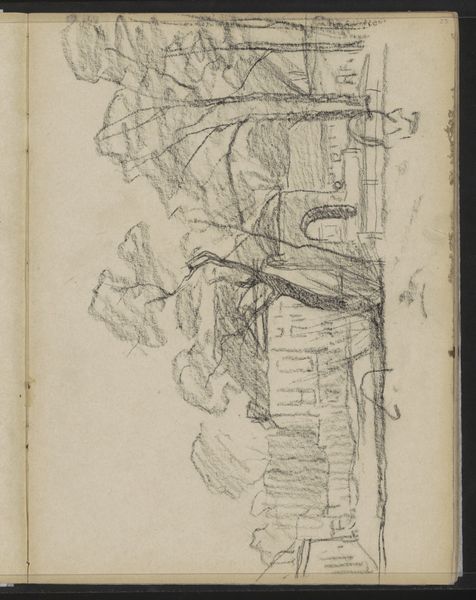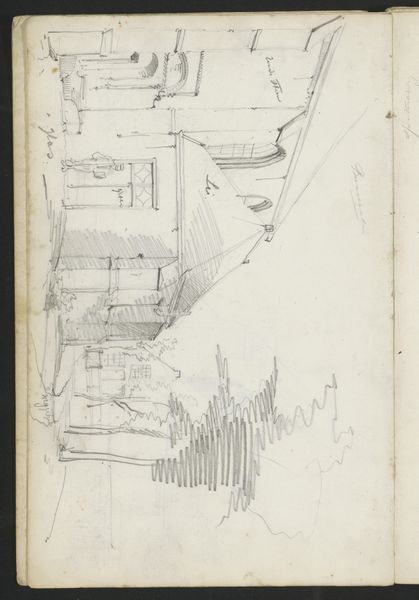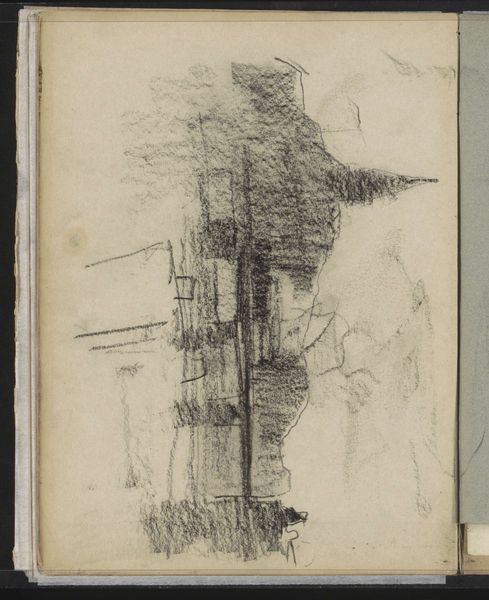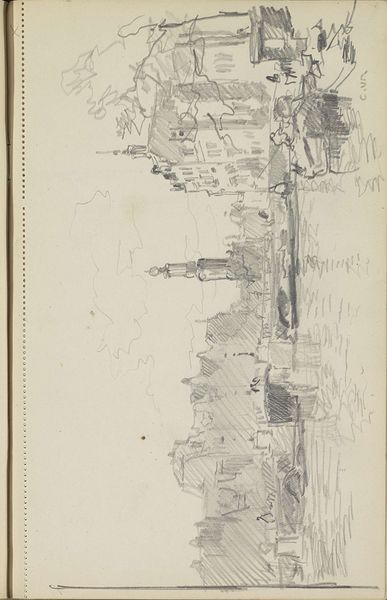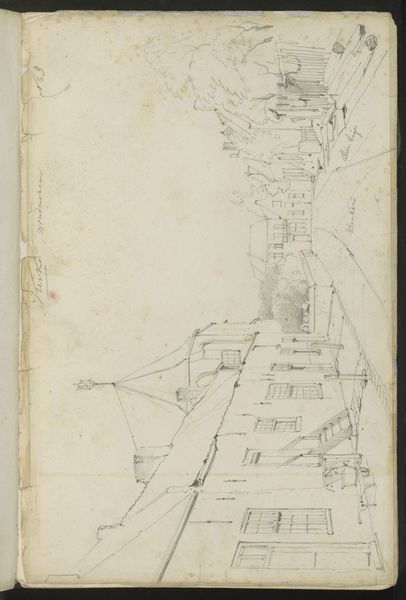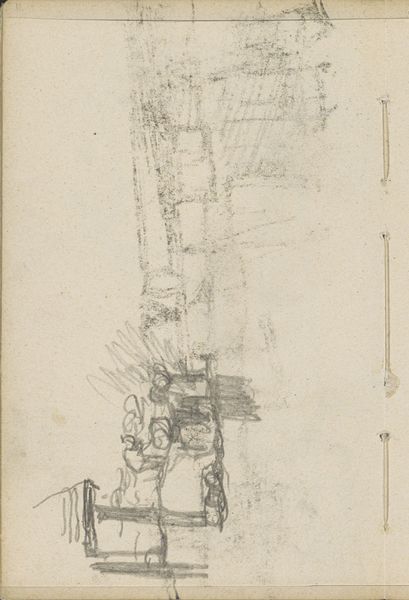
drawing, pencil
#
drawing
#
quirky sketch
#
pen sketch
#
sketch book
#
incomplete sketchy
#
landscape
#
personal sketchbook
#
ink drawing experimentation
#
pen-ink sketch
#
pencil
#
pen work
#
sketchbook drawing
#
cityscape
#
sketchbook art
#
realism
Copyright: Rijks Museum: Open Domain
Curator: Before us, we have Willem Koekkoek's drawing, dating roughly between 1849 and 1895, titled "Rijtjeshuizen aan weerszijden van een gracht," depicting terraced houses alongside a canal. Editor: It feels like a glimpse into the artist's personal sketchbook—raw, unfinished. The delicate pencil and ink work gives it a fragile quality. Curator: Indeed. The very medium—pencil and ink on paper—speaks to the accessibility of art-making. Consider the societal context. This was a period where urbanization was rapidly transforming the Dutch landscape. Sketchbooks allowed artists to capture these changes directly. Editor: The houses themselves, with their simple geometry and repeating forms, almost become symbolic. The canal, bisecting the scene, is interesting too. Water often represents the subconscious. The mirroring effect enhances the symbolic weight. Curator: Note the artist's attention to detail despite the sketch's preliminary nature. The slight variations in rooflines, the suggestion of textures...these choices imply deliberate observation and skillful rendering, pointing to his engagement with the craft. We also see notations inscribed on the image offering more specific contextual clues to the landscape. Editor: I'm drawn to the sketchy trees along the canal, which gives a contrast to the rigid structures. Perhaps those symbolize nature's persistence, even in an increasingly urban environment? They also break up the composition which adds depth. Curator: Possibly so. We see an emerging tension here in art from that time in finding harmony between industrial growth with natural and the rural, reflecting the social tensions of that period. This incomplete feeling resonates with our current perceptions of progress and urban society. Editor: It makes you wonder about his intentions. Was this meant to be a study for a larger piece? Or simply a visual record of his surroundings? Regardless, the visual impression it gives stays with you, like a fleeting memory brought to life. Curator: Agreed, looking closely into how Koekkoek rendered the perspective and made the decisions of where to emphasize certain forms over others teaches us much about his skills as an artist and an observer of the physical properties of the structures that constitute our world. Editor: This little drawing makes us contemplate the nature of "home," progress, and change, across eras. Thank you for your insights on its means of production and skill.
Comments
No comments
Be the first to comment and join the conversation on the ultimate creative platform.



